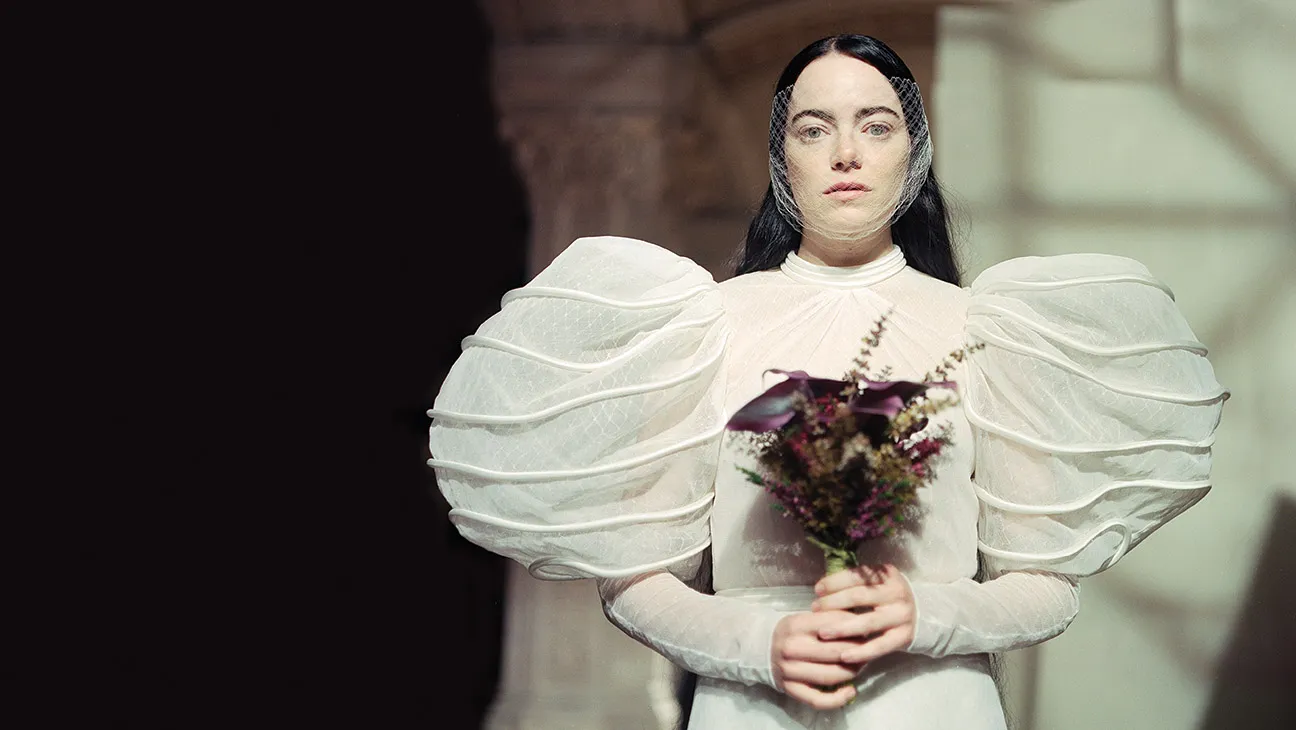Poor Things competing at the 80th Venice Film Festival: director Yorgos Lanthimos transforms Emma Stone into both a diva and a beacon of life in a stagnant, rule-bound world. She embodies an artistic creation that is simultaneously the old and the new, the end and the beginning.
by Marzia Gandolfi
Not so long ago, Yorgos Lanthimos was merely a “Greek curiosity.” Then, he burst onto the Venice scene with The Favourite, catapulting to the Oscars’ spotlight. His significant leap forward could have been a tale of ambition, yet The Favourite, with its ten Oscar nods, turns out to be a savage laugh in the face of power plays. In this film, the courtesans serving Queen Anne of Great Britain (1665-1714) constantly teeter on the edge of disgrace, their fates oscillating between the mud and the brothel. Lanthimos is no gentle pat on the back of contemporary society; he relentlessly exposes its worst: hypocrisy, lies, crime, and sectarianism. He detonates everything within his reach, shining in both form and content. Those who thought a historical film would soften his nihilistic nature were naïve. Unfazed, he storms the genre with cruelty and irreverence, delighting in provoking the figures that typically animate his works, using the splendor of a new realm as fodder for his audacity.
Lanthimos, in person, is calm, unassuming, almost ordinary—contrary to his cinema. He seems like a master of staying under the radar. During the Cannes Film Festival in 2009, where he received the Un Certain Regard award for Dogtooth, Lanthimos appeared shocked by the lengthy Q&A session, as if his films couldn’t speak for themselves. Yet, if there are films that raise questions and pry open mysteries we’re dying to solve, they’re his. How do you summarize Kinetta, his first film that no one dared distribute? It’s a parable of Greek society, where characters reenact a serial killer’s crimes in a desolate seaside town.
With Dogtooth (2005), the mystery deepens: a couple isolates their adult children from the world in a secluded villa, teaching them a life far removed from reality. But Lanthimos’ most curious imagination is at work in Alps (2011), his first foray at the Lido. The film, grappling with the relentless brutality of grief, won the Osella d’oro for best screenplay, confirming his taste for bizarre propositions, artificial or theoretical situations against the backdrop of reality.
Four years later, The Lobster pushes the boundaries of the unusual further, depicting a society where singledom is outlawed, and loners are doomed to turn into their favorite animals. And an animal also appears in his next title, The Killing of a Sacred Deer (2017), a cruel tale of human nature that puts a wealthy couple under a clinical microscope.
From a virtuosic surgical interior, we move to the castle of the last Stuart heiress in The Favourite (2019), and a fabulous game of domination. Three Graces, armed with power, teeth, and electrifying claws, energize this costume drama, reducing men to mere jesters or occasional allies who conform to the movements of the female trio. Some have delved into Lanthimos’ childhood to explain his peculiarities, but he defies any definition, especially the banal ones.
Born in Athens in 1973 and raised by his mother, who passed away when he was just 17, Lanthimos, like everyone, had a childhood that was both extraordinary and ordinary. More fascinated by Spielberg than by Angelopoulos, he views his country as virgin territory for cinema, diving in with absolute freedom. Liberated from any aesthetic dictates, Lanthimos studied in Greece’s only film school and reinvented himself as his latest character, perhaps his most beautiful one.
She’s Bella Baxter, an oxymoronic, syncretic “creature” born from the imaginations of Mary Shelley and Alasdair Gray. Her book, Poor Things, directly echoes Frankenstein. But Bella is a gothic monster (a surgical fabrication) and an incarnation (both literary and cinematic) that transcends the clinical to touch upon political and cultural realms. In the hands of Dr. Lanthimos, Bella becomes an artistic creation, embodying both the old and the new, the end and the beginning, the one and the many. A young woman brought back to life after a suicide by drowning, fleeing an abusive husband, she receives a brain transplant from the child she was carrying.
Rescued by a mad scientist (Willem Dafoe), she matures but does not grow, her body already that of an adult woman. It’s not the first time Lanthimos has captivated audiences even before the release of his film. A master at unsettling the audience, his fascination with destabilizing images starts with his posters. Like his previous promotions, the poster of Poor Things leaves a lasting impression, featuring Emma Stone‘s face in extreme close-up, with smeared lipstick and eyeshadow applied like a child sneaking makeup from her mother.
Another shows her petite “head” atop her elegantly poised adult body, becoming a vessel of life in alchemical transmutation operations: physical death as a prelude to spiritual rebirth and perfection. The trailer illusion is of a story starting from scratch. Bella, never having had a childhood, doesn’t know fear, so can she face the world with the wonder and innocence of a “newborn”? Or is she a revenant collapsing as the ‘parts’ borrowed from other stories take control of her fate? We’ll find out at the Lido and in the large turquoise eyes of Emma Stone, at the heart of a spectacular rebirth. She is the diva and the spark of existence in a world that is inert and normative.
Cinematografo, August 29, 2023





